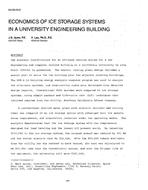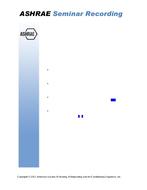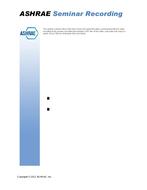Track: Net Zero Energy Buildings: The International Race to 2030
Sponsor: 2.8 Building Environmental Impacts and Sustainability, Residential Building Committee
Chair: Larry Brand, Member, Gas Technology Institute, Davis, CA
New homes and communities represent an opportunity for economical design options for zero net energy performance. This seminar explores the concept of design for affordability and for homes and communities and provides an overview of codes, standards and policies that influence affordability and market penetration. Home design incorporates integrated layout and system packages to maximize benefit-cost ratio. Community design incorporates building design and layout of the streets and community spaces for optimal solar orientation and building performance. Success stories are described along with a discussion of public policies intended to encourage zero net energy buildings.
1. Affordable Zero Net Energy Home Design Strategies
George Koertzen, Habitat for Humanity of San Joaquin County, Inc., Stockton, CA
Design for affordability incorporates thoughtful floor plans, thermal envelope, water distribution systems and HVAC systems to minimize costs and maximize benefit to cost ratio. This presentation provides detailed information on key design elements of affordable high performance homes. Case studies of successful application of these principles in affordable ZNE homes are summarized, along with insights on creative approaches and challenges when trying to apply cost-effective solutions to real-world affordable new construction.
2. Challenges and Opportunities in the Design of Sustainable Communities
Judi Schweitzer, Schweitzer and Associates, Lake Forest, CA
Turning zero energy ready homes into zero net energy homes, neighborhoods and communities can be facilitated or complicated by builder development strategies, community involvement, local ordinances and siting constraints. This presentation highlights cooperative and integrated design and siting strategies between developers and community agencies that can increase the penetration of affordable ZNE homes using guiding principles related to costs and benefits of sustainable development. Win/win/win combinations of individual home designs and community plot plans and infrastructure with high benefit-cost ratios for sustainable communities are highlighted, along with case studies of several new sustainable communities.
3. Zero Net Energy Policies: Opportunities and Challenges in California
Sue Kristjansson, Southern California Gas Co., Los Angeles, CA
California has set goals that all new homes will be zero net energy (ZNE) by 2020 and new businesses will be ZNE by 2030. These goals drive California energy policy and building industry responses and influence regional and national initiatives. This presentation summarizes California’s ZNE codes, standards and policies and their impact on the private sector and consumers and highlights challenges when trying to provide cost-effective ZNE homes. Examples of high performance buildings, design challenges, advanced available technology and ongoing efforts to provide breakthrough design options in response to the California ZNE goals are highlighted.
Presented: June 27, 2017, 11:00 AM-12:30 PM
Run Time: 90 min.
This is a zip file that consists of PowerPoint slides synchronized with the audio-recording of the speaker (recorded presentation), PDF files of the slides, and audio only (mp3) for each presentation.
Citation: ASHRAE Seminar Recordings, 2017 ASHRAE Annual Conference, Long Beach , CA
Product Details
- Published:
- 2017
- Units of Measure:
- Dual
- File Size:
- 1 file , 91 MB
- Product Code(s):
- D-LB17Sem41


